Hello everyone! If you’re a bird enthusiast or just curious about the different types of birds found in Texas, then you’re in the right place.
In this article, I’ll be discussing the 4 types of red birds that can be spotted in Texas.
These birds are not only visually stunning, but they also have fascinating behaviors and unique characteristics.
So, whether you’re an experienced bird watcher or a novice, keep reading to learn more about these beautiful birds!
| Image | Name |
|---|---|
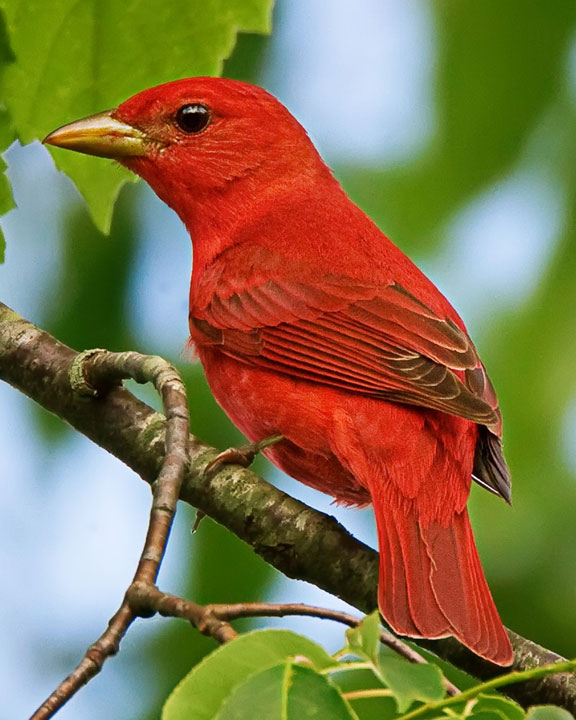 | Summer Tanager |
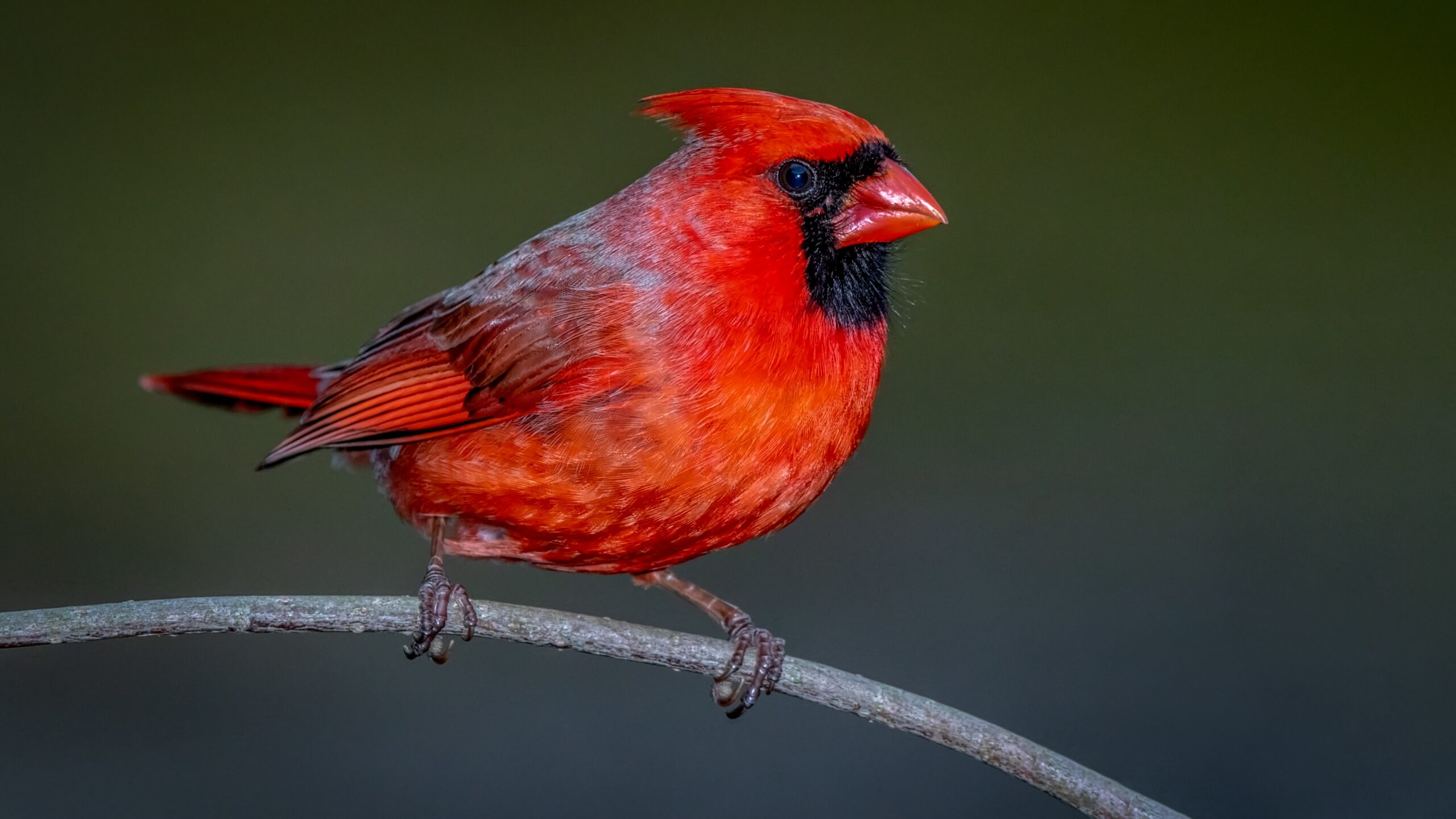 | Northern Cardinal |
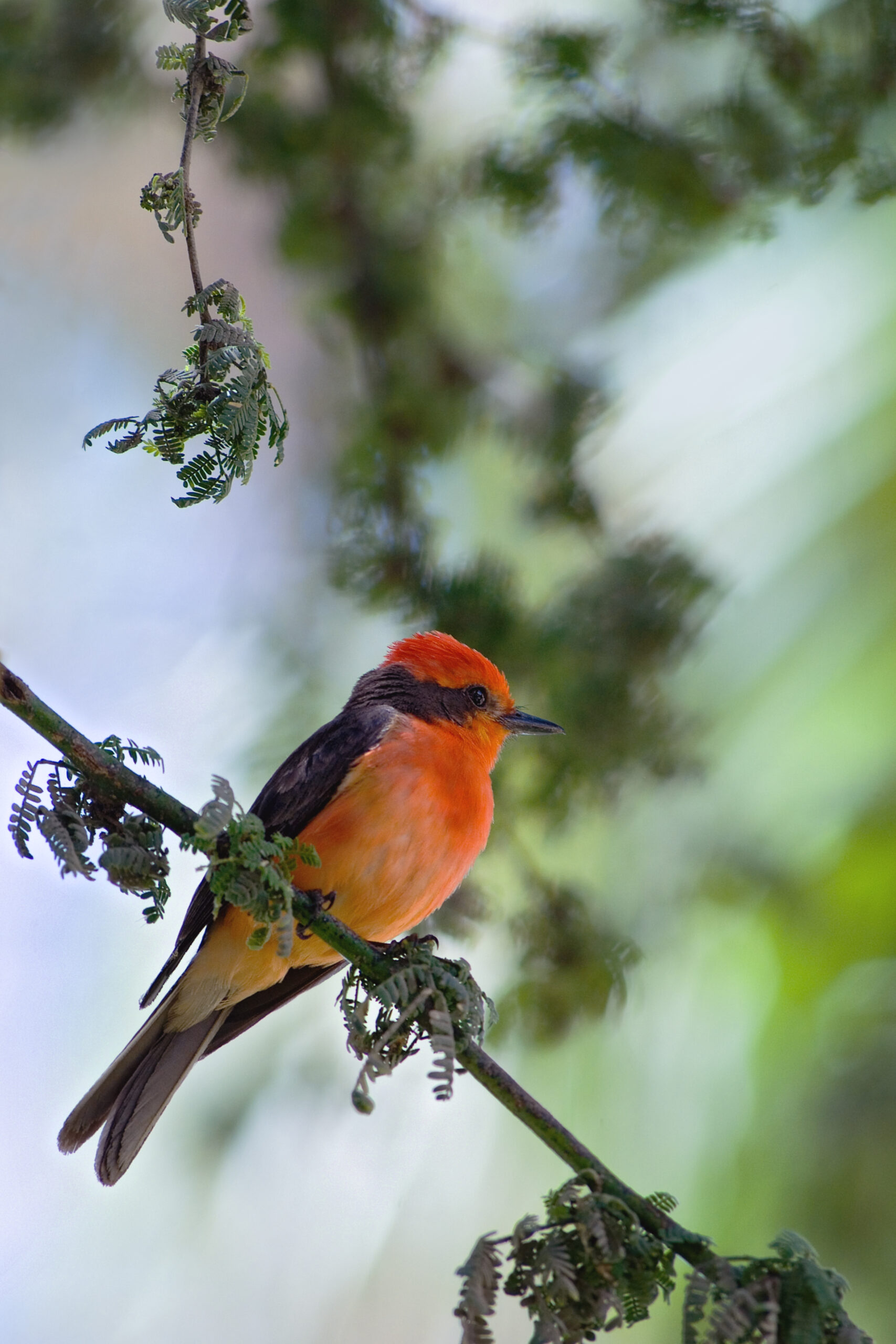 | Vermilion Flycatcher |
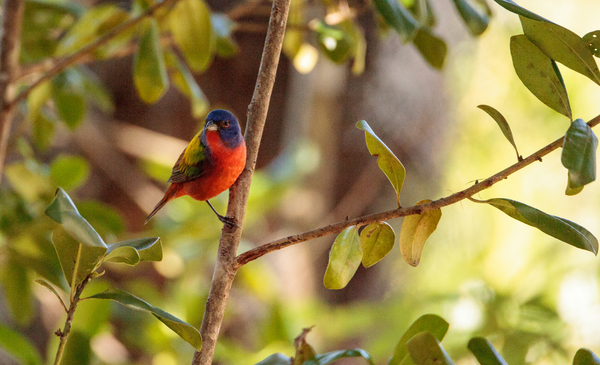 | Painted Bunting |
Types of Red Birds in Texas
1. Summer Tanager

The size of a summer tanager is comparable to that of a common cardinal.
The summer tanager is a species of the cardinal family despite its name and former classification as a “tanager” (Cardinalidae).
Like other cardinals, it has distinctive feathers and a distinctive call.
These birds spend much of their time out of sight, high in the trees, where they forage for food and sometimes take to the air to grab insects in mid-flight.
The adult male Summer Tanager is an all-red bird.
Both the females and the juvenile males are vibrant yellow-green, with the yellower areas being the head and underside and the greenish areas being the wings and back.
Yellowish in color, the bill is hardly noticeable.
Prepubescent males going through molting often have a mottled yellow and red appearance.
- Total Length: 6.7 inches (17 cm)
- Wingspan: 10 to 13 in (30 to 32 cm)
- Weight: 1.2 oz (32 grams)
- Lifespan: 3 to 8 years
This male Summer Tanager was recovered and released across Texas during banding operations in 1986, making him the oldest Summer Tanager at the time.
Each year, summer tanagers fly thousands of miles from their southern United States habitat to their wintering grounds across northern and central South America.
The man sings a series of melodic notes in a steady stream broken up by brief pauses.
The song lasts just two to four seconds, making it shorter than that of the American Robin.
It also makes an anxious “pii-tuk” or “piik-i-tuuk-i-tuuk” sound.
These birds spend much of their time out of sight, high in the trees, where they forage for food and sometimes take to the air to grab insects in mid-flight.
It’s possible that they’ll stop by bird feeders offering a wide selection of seeds.
The Cymbopetalum mayanum tree, native to Guatemala and Honduras, produces a fruit that is a popular staple in their diet.
Summer tanagers might well be attracted to gardens with this tree planted in them.
The Summer Tanager is not at risk of extinction.
According to the 2014 North American Nesting Bird Study, their numbers have been about the same since the survey began.
Due to the clearing of riverfront forests for farming and other purposes, local populations have diminished.
The Summer Tanager specializes in bees and wasps.
In order to destroy these flying insects, it captures them in midair and smashes them on a tree.
The tanager rubs the bee on the branch to eliminate the stinger before consuming it.
The Summer Tanager is another insectivore, and it starts its larval meal by destroying the nest in order to eat the grubs within.
2. Northern Cardinal
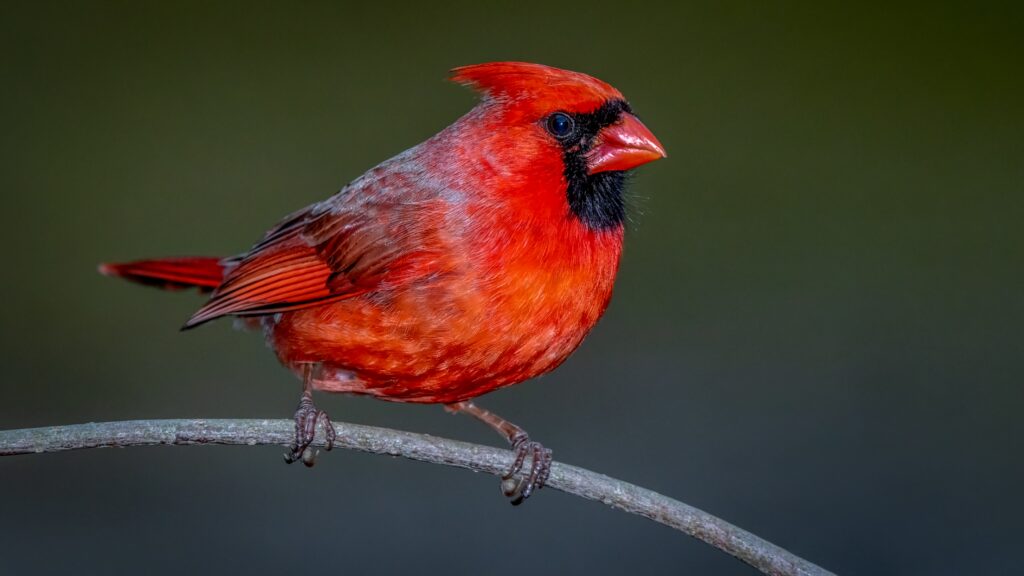
Common names for the northern cardinal, or Cardinalis cardinalis, include common cardinal, redbird, and simply “cardinal” (which was actually its name before 1985).
Northern cardinals are quite large songbirds. Males tend to be just a little bigger than females.
The man is a vibrant shade of red and wears a black face mask that covers his eyes and reaches up to his chest.
The female is primarily brown in color, yet her wings, forehead, and tail plumage have a little reddish hue.
The female bears a mask like the male; however, it is less pronounced.
The distinctive crest may be seen atop the heads of both sexes.
In terms of plumage, young birds look a lot like their mothers.
As a result of the Migratory Bird Treaty Act of 1918, the selling of this once-popular pet as a caged bird is now illegal.
- Total Length: 8.2 to 9.4 inches (20 to 23.7 cm)
- Wingspan: 9.7 to 12.3 inches (26 to 31 cm)
- Weight: 1.18 to 2.28 oz (33.7 to 65.1 grams)
- Lifespan: 11 to 16 years
Cardinals may live approximately 15 years as adults if they make it through their first 1 to 2 years.
The oldest cardinal ever recorded lived for 28.5 years in captivity.
A live hatchling has a roughly one-year life expectancy because of the high death rate of nestlings.
The cardinal may be found from Maine to Minnesota across Texas throughout the United States and south through Guatemala, Mexico, and Belize across Central America.
In other places like Hawaii and Bermuda, it was introduced.
It may be found in a variety of environments, including forests, gardens, marshes, and shrublands.
All across their range, seed feeders in suburban yards entice cardinals.
Their favorite seeds are safflower and sunflower.
They spend much of their time foraging on the ground for weed seeds (which make up around 90% of their diet) and insects in the wild.
Some couples stay together for many years, while others ‘split’ between months or select a new partner after the death of their spouse.
Most couples have an ongoing relationship throughout the year, although this does not always indicate monogamy.
Two populations of cardinals had their DNA analyzed, and the results showed that between 9% and 36% of the chicks were not sired by the female’s partner.
North Carolina, Illinois, Kentucky, Indiana, West Virginia, Ohio, and Virginia all claim the northern cardinal as their state bird, yet in each instance, the bird is simply called a “cardinal,” regardless of the specific state’s designation.
3. Vermilion Flycatcher

In North America, no other flycatcher compares to the vermilion’s brilliant plumage.
Bright red coloration makes males easy to see.
As compared to other members of its family, the vermilion flycatcher stands out.
Males possess a vivid red (vermillion) crest, underparts, and breasts, having brown tails and wings.
When the bird becomes angry, its little, fuzzy crest may stand out more.
Males possess a brown back and neck to complement their rich chocolate brown eye patch and brilliant red head and underparts.
Some men may even look luminous when seen in strong sunlight.
The females are not as brightly colored as the males, yet they still stand out because of their vibrant splashes of color.
- Total Length: 6.1 inches (65 cm)
- Wingspan: 9.6 to 10.1 inches ( 52 to 55 cm)
- Weight 0.38 to 0.48 oz (12 to 14 grams)
- Lifespan: 4.5 to 5 years
The vermilion flycatcher’s range spans all of South America and most of southern North America, along with the southwestern United States from the southern point of Arizona to California, across Texas, and then into most of South America.
The vermilion is most at home in semi-open habitats with nearby waterways or lakes and some cover.
This perching song, which ornithologist David Sibley calls a piit piit pidddrrreedrr, is crucial in establishing territory and may vary from bird to bird.
According to the Cornell Lab of Ornithology, you should stress the last word while saying its name.
Here is a second one other xeno-canto sample of the song of the vermillion flycatcher.
Search for the vermilion flycatcher in wide, shrubby environments across its habitat throughout North America.
These include lightly farmed plains, scrubby deserts, evergreen tropical lowlands, and riverine woods.
They hunt insects from the air thanks to their specialized role as insectivores.
Vermilion Flycatchers are known to sit for extended periods of time on high, visible places, such as bushes or fence lines.
They sit in one place and scan the sky for insects, which they then grab in midair with short, swooping flights called sallies.
4. Painted Bunting

The painted bunting is an indigenous North American bird belonging to the Cardinalidae family.
The male painted bunting has been dubbed nonpareil, which means “without equal,” because of widespread claims that he is North America’s finest gorgeous bird.
The painted bunting, stunning as it is, just qualifies as one of the “red” birds thanks to its mostly black upper body and white underside.
If you’re trying to identify a bird, the male of this species is probably the simplest to see.
Female and juvenile female painted buntings have a green and yellow-green color, respectively.
The camouflage effect is achieved by the combination of pattern and color.
- Total Length 4.8 to 5.6 inches (11 to 15 cm)
- Wingspan: 8.4 to 9.1 inches (2o to 24 cm)
- Weight: 0.38 to 0.48 oz (11.5 to 14.2 g)
- Lifespan: 11.3 years
The song of the Painted Bunting consists of brief melodic bursts of thin, sweet trills that endure for little more than 2 seconds.
A male may sing as many as nine or ten songs per minute from many perches inside his territory as he establishes his breeding grounds in the spring.
Its summer or breeding range extends from Georgia through northern Florida along the Atlantic coast, and it also covers the south-central United States (Louisiana, Arkansas, Texas, and Oklahoma).
The shrubby borders at the boundary of tropical forests or heavily vegetated savanna are where they congregate during the winter across Mexico, Cuba, Central America, the Bahamas, and South Florida.
To see them, go to the Bird Blinds at Inks Lakes Nature Preserve or Pedernales Falls Provincial Park.
They are elusive birds, and only the males may be heard singing from the canopy above in the morning.
Birds are often seen around feeders filled with various types of bird food.
Male painted buntings may be heard singing from the canopy of trees early in the morning, but these shy birds are seldom seen until then.
When foraging, painted buntings generally hop around the ground, pausing to attentively inspect their surroundings at regular intervals.
Each day, the painted bunting consumes a staggering number of grass seeds.
During nesting, painted buntings feed their young mostly on insects and other tiny arthropods.
Buntings are known to undertake nocturnal migrations across short and medium distances once the mating season has ended.
Although male-painted buntings were historically common pets, it is now against the law to catch and keep them as pets.
The loss of coastal swamp thickets and forest margins in the east and riparian environments along winter migratory routes across Mexico and the United States is the primary cause of the population decline.
Conclusion
In conclusion, Texas is home to a variety of striking red birds, each with its unique appearance, behaviors, and habitats.
From the iconic Northern Cardinal to the lesser-known Vermilion Flycatcher, these birds are a wonder to observe in the wild.
By understanding the different types of red birds in Texas and their ecological roles, we can appreciate and protect these feathered creatures for generations to come.
So, grab your binoculars and head out to your local park or backyard to catch a glimpse of these stunning birds and enjoy the beauty of Texas wildlife.
FAQ
What is the most common red bird in Texas?
The Northern Cardinal is the most common red bird found in Texas and is also the state bird of Texas.
Where can I find red birds in Texas?
Red birds can be found in a variety of habitats, including woodlands, savannas, grasslands, and residential areas with trees and shrubs. The specific habitat and range of each bird species may vary.
What do red birds eat?
Red birds have a diverse diet that includes seeds, fruits, insects, and small animals such as snails and spiders.
Are red birds endangered in Texas?
The Northern Cardinal and Red-bellied Woodpecker are not considered endangered or threatened in Texas. The Vermilion Flycatcher and Pyrrhuloxia are of the least concern, but their populations may be declining due to habitat loss and other threats.
Can red birds be kept as pets in Texas?
It is illegal to keep wild birds as pets in Texas, including red birds. Only captive-bred birds obtained from licensed breeders may be kept as pets, and permits may be required. However, it is generally not recommended to keep wild birds as pets, as they require specialized care and may suffer from stress and health problems in captivity.
Last Updated on April 12, 2023 by Lily Aldrin
